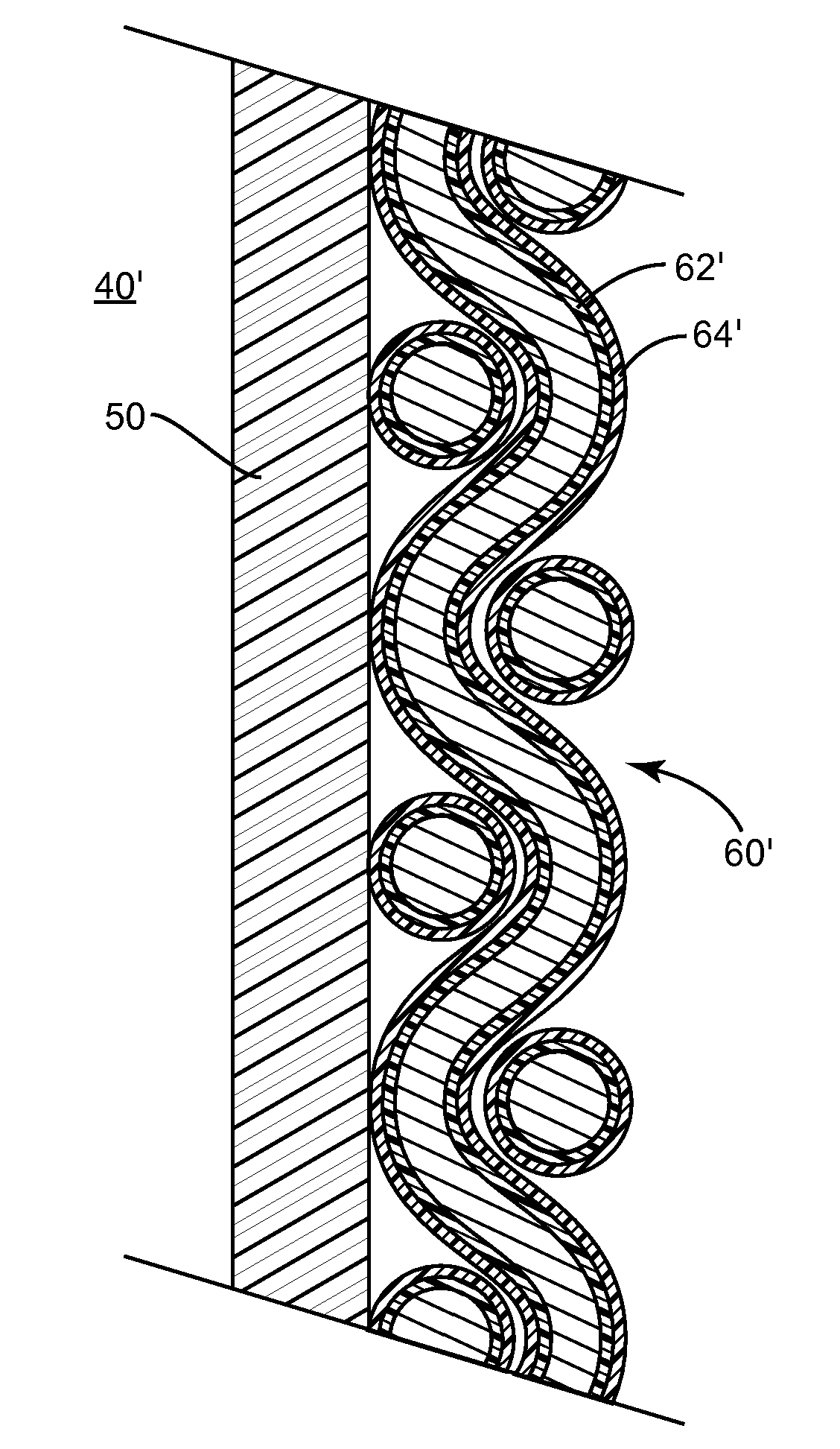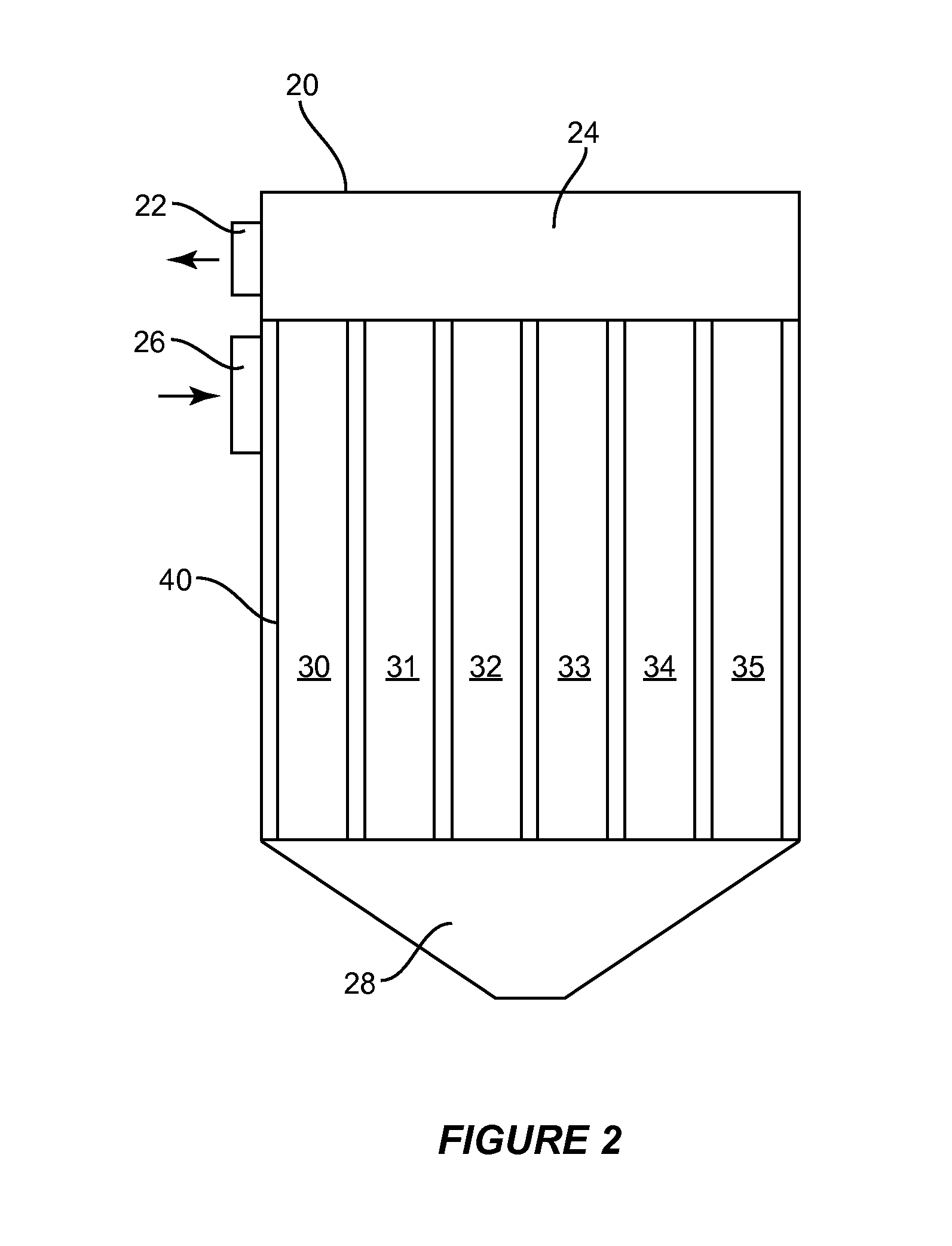Static dissipative glass filtration fabric
a technology of filtration fabric and static dissipation glass, which is applied in the direction of gravity filters, filtration separation, separation processes, etc., can solve the problems of increasing energy consumption, lessening the energy requirements of users and installers of bag house filters, and increasing energy consumption, so as to reduce the likelihood of leakage, increase the energy consumption, and reduce the effect of energy consumption
- Summary
- Abstract
- Description
- Claims
- Application Information
AI Technical Summary
Benefits of technology
Problems solved by technology
Method used
Image
Examples
example 1
[0034]By way of example, glass continuous filament glass yarns are woven into a fabric with a weight of 9.35o2 / yd2. The fabric is known as BGF Style No. 427. The weave pattern is a 1×3 right hand twill. The warp yarns are ECDE 75 (7500 yds / #). The fill yarns are plied yarns formed of ECDE 150 filamentary and ECDE 50 textured. There are 54 ends / inch in the warp and 30 ends / inch in the fill. A first bath, as shown below, was applied to the woven fabric using a saturation process known in the art. After drying, a second composition was applied following application of the first composition. Resistance of this filter media, a measure of conductivity, was recorded at 3.5×106 ohms, measured in accordance with BGF Lab Procedure No. QCMANF43.
[0035]
1st Composition2nd CompositionFluoropolymer 9%20-%Lubricant 1.8%N / ACarbon Black Pigment 13%N / AWater76.2%80-%
The textile filter media was then laminated to membrane of expanded polytetrafluoroethylene and formed into a bag for use in the bag hous...
PUM
| Property | Measurement | Unit |
|---|---|---|
| temperatures | aaaaa | aaaaa |
| temperatures | aaaaa | aaaaa |
| temperature | aaaaa | aaaaa |
Abstract
Description
Claims
Application Information
 Login to View More
Login to View More - R&D
- Intellectual Property
- Life Sciences
- Materials
- Tech Scout
- Unparalleled Data Quality
- Higher Quality Content
- 60% Fewer Hallucinations
Browse by: Latest US Patents, China's latest patents, Technical Efficacy Thesaurus, Application Domain, Technology Topic, Popular Technical Reports.
© 2025 PatSnap. All rights reserved.Legal|Privacy policy|Modern Slavery Act Transparency Statement|Sitemap|About US| Contact US: help@patsnap.com



